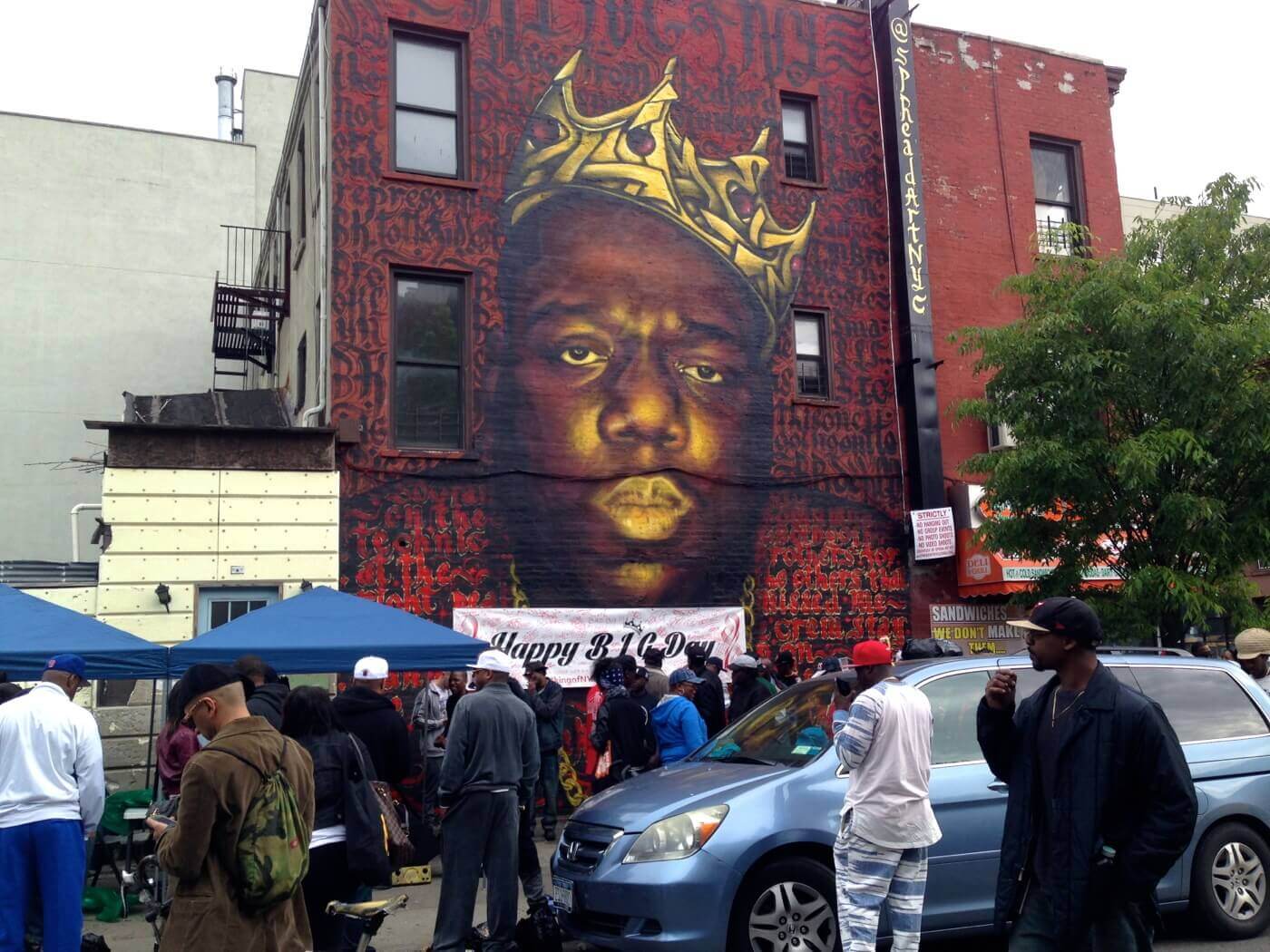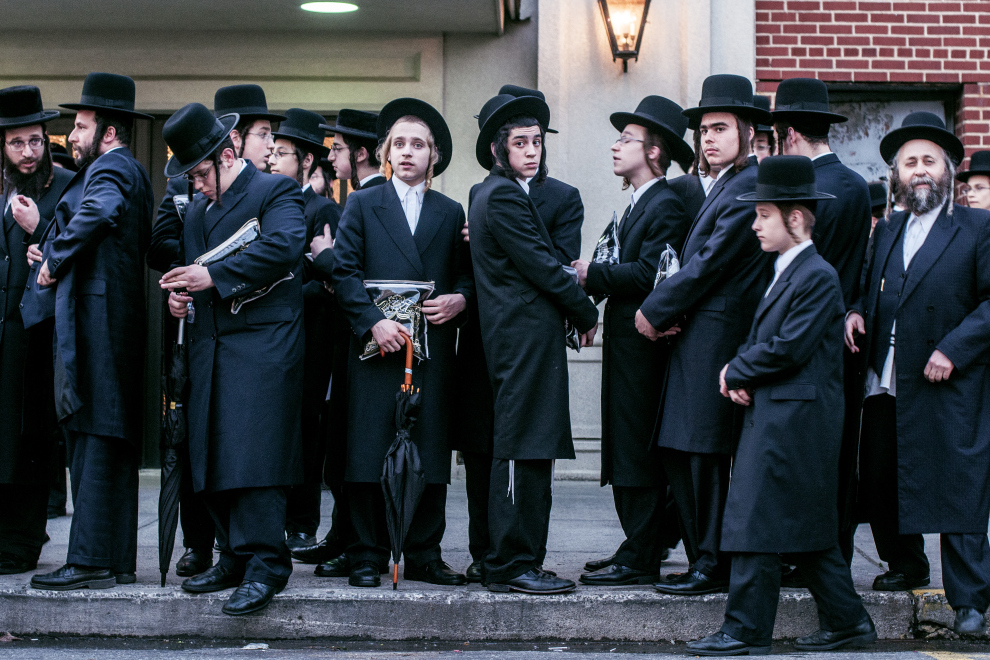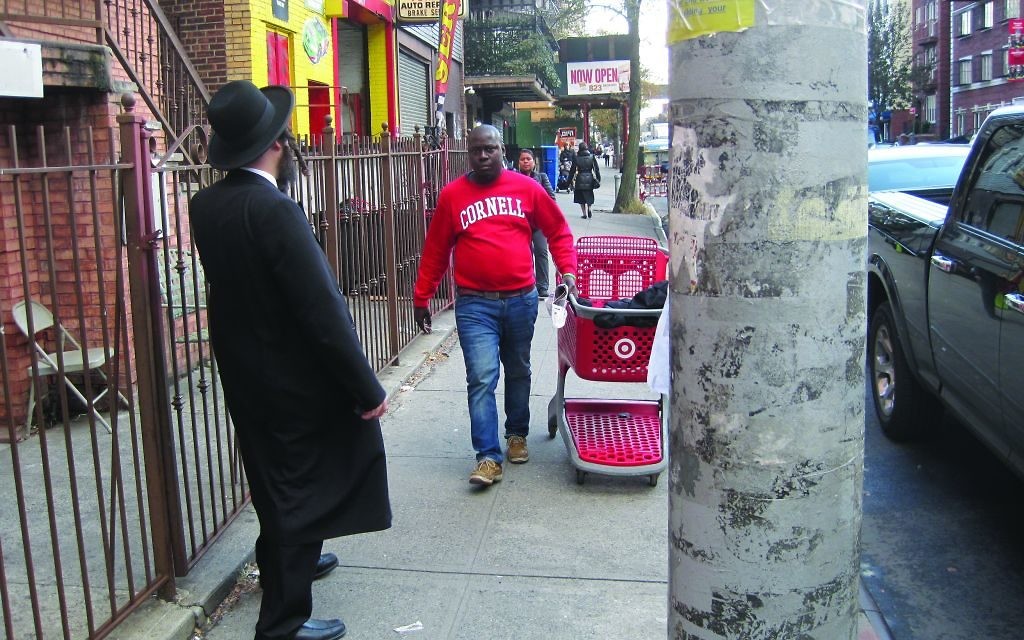
This July will be the 30th anniversary of Spike Lee’s hit film Do The Right Thing, which took place in the Bedford-Stuyvesant (“Bed-Stuy”) neighborhood of central Brooklyn. And almost 40 years ago Billy Joel sang “I walked through Bedford-Stuy alone” in his pop hit “You May Be Right.” These two pop culture classics paint a picture of Bed-Stuy as a place on the edge, or on edge. Is Bed-Stuy still like this in 2019? Or like much of New York City, have the rough edges been smoothed out over time in the name of economic prosperity and upward mobility.
Going back to the 1800s and early 1900s, Bed-Stuy was a desirable, sought out neighborhood, with well-to-do WASP and Jewish families, some quite prominent. There were also tight-knit enclaves of African-Americans. After the First World War, more modest Jewish families as well as Italian-Americans made their homes here, so did many more African-Americans. Over time many of these families moved away and by the 1960s, at the height of the Civil Rights movement, the majority of the neighborhood was working class and poor African-Americans, where tensions grew between them and the local police. As in other parts of the United States – Newark, Harlem, and Chicago, there was rioting and the “urban crisis” arrived in Bed-Stuy. The number of drug abuse cases, poverty, and poor schools increased.
 However, by the time Do The Right Thing became a hit, the neighborhood’s fortunes were improving. And since then Bed-Stuy has seen new real estate development, new small businesses, and a reduction in crime.
However, by the time Do The Right Thing became a hit, the neighborhood’s fortunes were improving. And since then Bed-Stuy has seen new real estate development, new small businesses, and a reduction in crime.
Walk or drive around Bed-Stuy in 2019 and you will encounter a neighborhood of dichotomies. There are blocks upon blocks of older walkup houses, typically three or four stories high; the majority were built between 1870 and 1920. There are several churches, some housed in buildings nearly or more than 100 years old, and most of which are Baptist. There are four public libraries, three of which are over 100 years old. Two of the oldest public school buildings are the original Girls’ High School on Nostrand Avenue and original Boys’ High School on Marcy Avenue. And the legendary tree, the Magnolia Grandiflora (Southern Magnolia) on Lafayette Avenue is a landmark, planted at #679 in 1885.


Street names within Bed-Stuy, whose borders handily resemble a quadrilateral with its right angle in the southwest corner, offer up lessons in American history. The War for Independence is represented here with names such as Gates, Greene, Hancock, and Lexington (war generals). Lafayette, Kosciuszko, Pulaski and DeKalb (foreign generals who helped the American cause) are here too. Presidential names that grace streets here include Jefferson, Madison, Monroe, Van Buren.
There are also a growing number of new and renovated buildings, seemingly popping up on avenues and side streets. The avenues house a mix of modest businesses, take-out food stops and hardware stores, but also hip new and recent coffee houses, bars and boutiques.
But other blocks seem frayed at the edges, with houses in need of paint jobs and other improvements; on commercial streets you will encounter panhandlers; and while some businesses seem chic or cutting edge, others feature faded hand-painted signs and weathered fronts.
So, which is the real Bed-Stuy? Which will be the dominant Bed-Stuy in five years? Will they reside side-by-side? Or will the wealthier elements push out the poorer? Who will become marginalized, who will leave?
And how does the Bed-Stuy of 2019 compare to that of the past? And which past? As we see time and again in New York City, one person’s past can be vastly different than another. The ties that supposedly bind us are elusive. True, nearly everyone rides the subway at some point, and nearly everyone visits the Brooklyn Botanic Garden. But after that, where and what is our commonality?
Two friends of mine grew up in Bed-Stuy, but their experiences differed somewhat. Barbara is a Jewish woman who lived there until she was eight, and Ed is an African-American man who lived there for much of his young life. Barbara has lived her whole life in Brooklyn but in other neighborhoods in addition to Bed-Stuy, whereas Ed, who is also a Vietnam War veteran, now lives in Suffolk County, Long Island.
In the early 1900s Bed-Stuy had a sizable Jewish population. By the end of World War 2 most of them moved elsewhere within Brooklyn, or out to Long Island and elsewhere, but you can still see remnants of the Jewish past because several former synagogue buildings are now used by Christian churches. The former Ahavath Achim resided at 404 Gates Avenue; Ahavath Chesed was at 742 Jefferson Avenue; Bialystoker Bikur Cholim built a large building at 3 Lewis Avenue; Israel Elioe Brethren of Yale was at 476 Kosciuszko Street, New Hebrew School on 146 Stockton Street; others were located on Putnam Avenue, Hart Street, DeKalb Avenue. All these buildings are now used instead as Christian churches.


Barbara recounts that
“My mom said the shul (we often attended) was on Pulaski Street and a short walk from our apartment. The entrance was up a few stairs with men going to one side, women going to the other. Mr. Sayowitz was the president.
My grandmother moved from the Lower East Side to an apartment house 1046? Dekalb Ave around 1940 to be near her daughter (my Aunt Edie) who had had twins in 1939 and lived at 907 Lafayette. I think my aunt’s father-in-law, who was very religious, owned the brownstone. So I guess there was an Orthodox presence in the area before 1939. I remember Orthodox people living across the street from my father’s grocery store, 1044 Dekalb. Most moved away before we did in 1959. My father kept the store until a few years after the Bed-Stuy riots in the ‘60’s. He had a good relationship with his customers and they protected his store from vandalism during the riots. My grandmother’s building was mostly white, not necessarily Jewish. The building on one side had mostly black people and mostly Puerto Ricans lived in the building on the other side. The little kids all played together outside on Dekalb.
I also remember a kosher deli, probably at the corner of Dekalb and Stuyvesant. And of course, Schluker’s bakery a few blocks away on Dekalb. They would give me a bag of small cookies whenever I went in with my mother. I guess that was either because I was so skinny or because my father may have bought baked goods from them for sale in his store.
My grandparents and my aunt and uncle moved to Bensonhurst around the time I was in first grade. I also had another aunt who, I think, lived on Stuyvesant with her two children.
We lived at 570 Kosciusko Street. At the time it was at the corner of Reid Ave, now renamed Malcolm X Blvd. The building is no longer there. I remember another little girl in my building whose family tore toilet paper off the roll into sections in preparation for Shabbos.
My father took ownership of the store after the war, 1946? 1947? It had been an appetizing store selling only kosher items and closed on Saturdays. As the neighborhood and customers’ needs changed, it became a grocery store open on Saturdays and selling non-kosher items such as non-kosher cold cuts, including ham. This alienated the Orthodox people who remained and had probably been friendly with my extended family. If I recall correctly, the first succah (tent-like house for the holiday of Succot) I went to was across the street from my father’s store.
For first and second grades, I went to the Yeshiva of Brooklyn on Willoughby Ave. I don’t remember the cross street but it was somewhere between Stuyvesant Ave and Downtown Brooklyn. It was a corner building. There was a fairly large formal synagogue (not a shteibel) on the ground floor, probably used for Shabbos and holidays, maybe weekdays, and there were classrooms upstairs. Boys and girls were in separate classrooms. Hebrew and Yiddish studies were taught in the morning with secular studies the focus in the afternoon. Barbra Streisand went there for a short time before I did.
Shortly after we moved, the school moved to Ocean Parkway and is now comprised of many buildings. The school/synagogue was sold to a church not long after that. If I recall correctly, they didn’t want to sell the building to a church…”
Barbara’s school on Willoughby was familiar to Ed German, an African-American man who spent most of his early years in Bed-Stuy and adjoining neighborhoods. In fact, about five years ago he sent me a black-and-white photograph of this building when it was a Jewish school. By the time I was first familiar with this building it was a secular early-childhood school. However, within the past two or three years this building changed hands and it now houses a Hasidic boys’ yeshiva.
Ed has told me anecdotes of his childhood and he also wrote a memoir, Deep Down in Brooklyn.
“People don’t watch their kids closely. Ma says ‘Go outside somewhere and play.’
Kids are warned by their parents to stay off the roofs (of apartment buildings) but it’s a challenge to keep up with kids’ whereabouts…
(In the fall) after a couple of weeks I’m going back and forth to school on my own and each day at 3 o’clock there are fights outside the school.
We and our white friends are close and share each other’s ice cream. (BK) sucks on a Fudgesicle, then sticks in in each of our mouths… When the Black kids arrive from down south they’re wild and rowdy, and menace the Jewish kids by snatching their Yarmulkes off and pulling the curls on the sides of the boys’ heads. The Jews begin walking differently now, less relaxed, faster, looking around and being careful. They look at people suspiciously.
By 1960 most of the white families on the block are gone and one of the last Jewish families to leave is the Halperins at 660 Willoughby…”
These two people, near in age, might have crossed paths as youths in Bed-Stuy. And they did take note of the changes in ethnic makeup of the neighborhood.
Fast forward to the 2000s. Neighborhoods to the west of Bed-Stuy such as Fort Greene and Clinton Hills have gone from heavily African-American to much more mixed; more whites and Asians have moved in, and with their influx have come more upscale restaurants and shops, and higher housing prices and higher rents. This has been happening as well to Bed-Stuy and to areas further east, such as Bushwick and Williamsburg (although those areas were more heavily Latino). If you drive or walk around various parts of Bed-Stuy, especially the southern and northern sections, you will see how integrated they have become. Do The Right Thing reflects a rather different racial makeup. The late 1980s Bed-Stuy may have a lot of the same housing stock, but the faces are different. And some of the older Blacks have moved away from Bed-Stuy, going south or to other parts of New York City.
As for myself, I am a lifelong resident of Brooklyn, but my connections to Bed-Stuy were mostly forged in my adulthood. I taught 7th graders for one semester at MS 143K, on Gates Avenue at Stuyvesant Avenue. (The school closed and reorganized after I left.) A few years later I taught for one-and-a-half years at nearby ACORN High School for Social Justice (which has since changed its name to Brooklyn High School for Law and Technology) on Broadway at Howard Avenue. I conducted research in the area for The Lost Synagogues of Brooklyn. I attended the 8th annual Brooklyn Loves Michael Jackson block party, largely sponsored by Spike Lee, in August 2018.
My impression of Bed-Stuy when I was a child was that it was very dangerous and not a place for me to visit; like Bushwick, and much of Brownsville-East New York, Bed-Stuy was a section of Brooklyn that I heard about but did not travel to nor through. However, when I conducted the research for The Lost Synagogues of Brooklyn, I began to roam (by car) the area and was impressed by the housing stock. It reminded me in certain ways of Harlem.
Teaching in Bed-Stuy and commuting there, I became familiar with the main streets and several side streets. And each year it seemed to become glossier, what with chain stores coming in, new apartment buildings, trendy eateries and bars…. And more white and Asian people moving in. You can patronize French restaurants and an upscale bar called Otway on Fulton Street. You can patronize stores that stock designer clothes, and you can also patronize shops that sell locally made goods. The cultural emphasis is a grab-bag at times, in Bed-Stuy 2019.
Is this kind of change…inevitable? Is it good? Is it good for some and not all? In what direction(s) will Bed-Stuy go in the next five years? Ten years?
Bed-Stuy, Do or Die has a toughness inherent in its phrasing. But is this slogan fitting today? I’m not so sure.
– Ellen Levitt


Leave a Reply